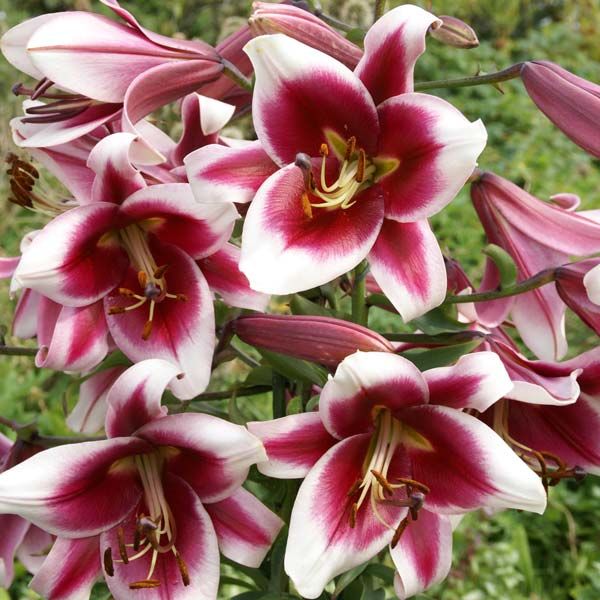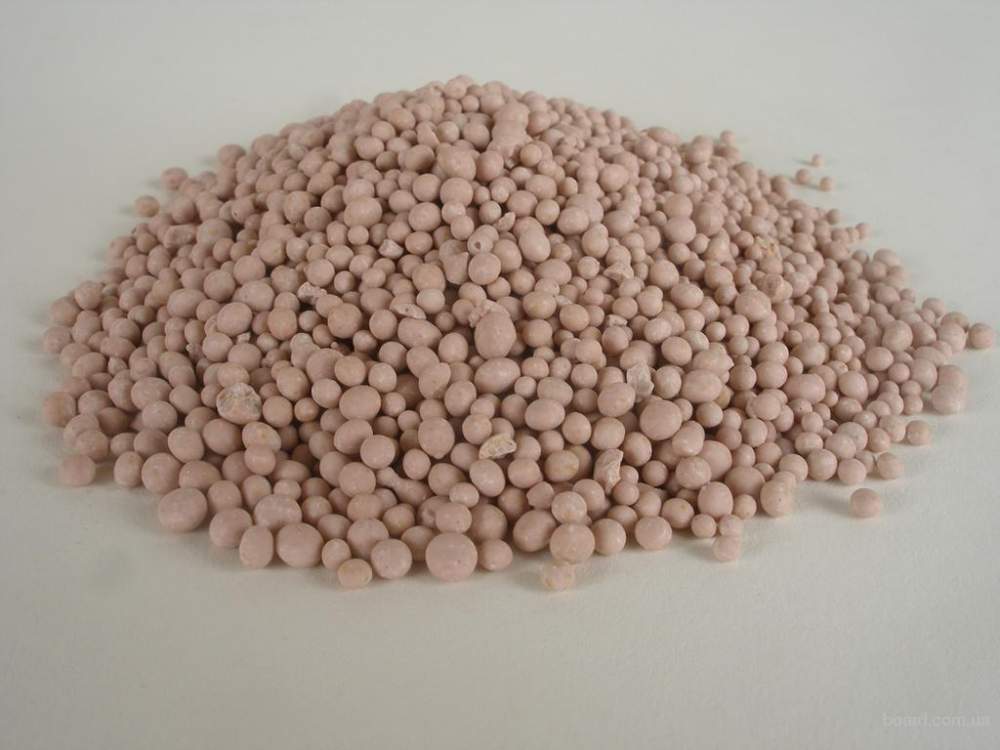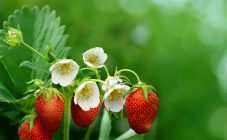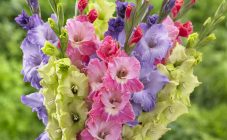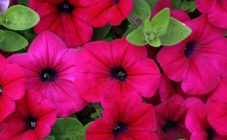Content:
Many plant lilies along with other flowers, forming compositions of multi-colored buds. They bloom in summer, forming many buds of various shades and sizes, depending on the variety. During the period of growth and budding, flowers are very demanding for feeding, therefore, fertilizers need to be applied from time to time to restore the balance of nutrients.
General rules for caring for lilies during the flowering period
During bud formation, the plant expends a large amount of energy and nutrients. Therefore, during their heyday, they need special care. However, compared to other cultures, they require much less attention. Watering plants is carried out in small portions several times a day. At a high average daily temperature, lack of moisture in the soil, you need to water them with plenty of water every day. In rainy weather, it is worth reducing the volume to a minimum.
When cutting for a bouquet, you should leave most of the stem with leaves. The incision is made obliquely so that water does not get inside during watering or rain. An excessive amount of moisture leads to rotting and death of the flower. For autumn pruning, you need to cut the plants at a height of 10 to 20 cm from the soil. Before the start of wintering, crops must be mulched with peat.
How to feed lilies
Feeding lilies during flowering, as at any other time, is needed to strengthen the bushes. The procedure is carried out in the spring when planting, during the budding period and when the plants have faded. In this case, the flowers will delight with lush flowering for a long time.
Feeding lilies in spring
Spring planting will require fertilization only if there is no humus in the soil. Bad soil must be diluted with nutrients. The choice of how to fertilize the soil remains with the grower.
In addition, superphosphate is added in a proportion of 100 g per 1 m². Wood ash is added in the same volume. Its addition strengthens the plants, makes it easier to survive the winter and produces larger flowers.
How to feed lilies during flowering
In summer and during flowering, it is important to fertilize efficiently. Wood ash works well for this. During the entire flowering period, you need to make it up to 5 times. Such fertilization has a positive effect on the development of the peduncle and petals. Also, feeding lilies during flowering will increase disease resistance.
The introduction of complex nutrients will also have a beneficial effect on strengthening the bushes. For this, amofos, nitroammophos and azophos are used. For the use of 1.5 tbsp. spoons are dissolved in 10 liters of water and watered. Calculation for 1 m².
In the second week of July, you need to additionally fertilize the plants with potassium magnesium. The substance helps to strengthen the stem and peduncle, enhance the red shades of the petals.
Top dressing in autumn
After flowering, be sure to fertilize the lilies for recovery. At this time, a number of processes for the accumulation of nutrients occur on the bulb.The use of a phosphorus-potassium composition will greatly improve the ability to resist severe frost.
Superphosphate and potassium magnesium are used for this. In a bucket of water, dilute 1 tbsp. a double spoon or 2 tbsp. tablespoons of regular superphosphate and 1.5 tbsp. tablespoons of potassium magnesium. To speed up the process, you need to preheat the water. The resulting solution is designed for 1 m².
Fertilizer selection
The best choice for preparing and storing nutrients is a potassium phosphate supplement. It also enhances protection against disease. Organic substances that cover the places of occurrence of rhizomes will save from frost.
Compost and humus are suitable from folk remedies. They serve for additional nutrition in the fall, and in winter they wrap the bulbs, protecting them from the cold. In spring they are a good feeding and protection from excess moisture.
How to fertilize plants correctly
What and how to feed lilies during the flowering period? The best fertilization method is a diluted slurry. The formulations in the form of granules will take too long to dissolve in the ground, and while they are absorbed by the plant, the buds may already bloom.
If fertilized with a potassium or phosphate mixture in early September, plants can bloom again. In this case, when cold weather sets in, they can freeze.
As for the fertilization time, you need to start work only after abundant watering. Top dressing is carried out even if the aerial part of the flower has died from diseases or parasites. The bulb stays in the ground and can bloom again next year.
To care for flowers, you need to regularly weed from weeds, loosen the soil, water and feed the bushes. It is necessary to observe a constant water regime of the soil, since the bulbs do not tolerate stagnant water poorly. Therefore, when landing, you need to choose places without a close occurrence of groundwater, excessive lighting and drafts.
Regular feeding is needed to accelerate growth, saturation during budding and protect against diseases. This is especially necessary during flowering as the growing parts require a lot of energy and nutrients. The best means than to feed lilies during the flowering period are potassium sulfate and superphosphate.
